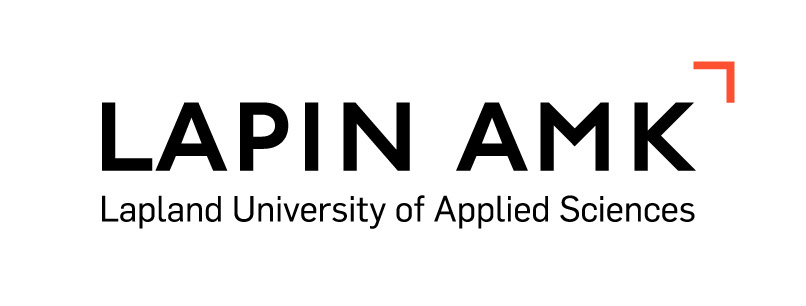Creation of Sustainable FutureLaajuus (5 cr)
Code: YAMK154
Credits
5 op
Objective
Student can acquire and utilize information about futures studies, future trends, weak signals, and technology trends for creative thinking and solution development, strategy building and innovation for future. Student is able to combine information from different sources in developing novel solutions, service or business concepts. Student applies future and sustainability oriented design methods while taking sustainability issues into account. Student understands the basics of systems thinking and applie them in practice when developing sustainable solutions for future.
Main competences on the course: proactive development, internationality and multiculturalism, sustainable development
Content
- The concept of sustainability and sustainable development goals (SDGs) and their applications in future related development and innovation activities
- Futures studies and future related information sources (e.g. trends, weak signals)
- Future and sustainability oriented design methods
- The basics of systems thinking
Assessment criteria, satisfactory (1)
1-2: Student
- can acquire futures related information and identify suitable information sources.
- understands the concept of sustainability.
- knows the future and sustainability oriented design methods.
- understands the basics of systems thinking.
Assessment criteria, good (3)
3-4: Student
- can utilize information from futures studies and future related information sources in development and innovation activities.
- can develop future related sustainable solutions.
- can use the future and sustainability oriented design methods.
- can utilize systems thinking in problem solving.
Assessment criteria, excellent (5)
5: Student
- can synthesize and analyze information from futures studies and future related information sources in development and innovation activities.
- can develop and evaluate future related sustainable solutions and lead the development activities.
- can apply the future and sustainability oriented design methods and evaluate the design process and outcome.
- can apply systems thinking in problem solving and critically analyze complex future related problems.
Enrollment
05.08.2024 - 25.08.2024
Timing
24.09.2024 - 24.10.2024
Credits
5 op
Virtual proportion (cr)
5 op
RD proportion (cr)
3 op
Mode of delivery
Distance learning
Unit
Master's Degree Programmes
Teaching languages
- English
Seats
15 - 40
Teachers
- Panu Huczkowski
- Anthony Okuogume
Student groups
-
YAMKPROFYAMK, profiloivat opinnot
Objective
Student can acquire and utilize information about futures studies, future trends, weak signals, and technology trends for creative thinking and solution development, strategy building and innovation for future. Student is able to combine information from different sources in developing novel solutions, service or business concepts. Student applies future and sustainability oriented design methods while taking sustainability issues into account. Student understands the basics of systems thinking and applie them in practice when developing sustainable solutions for future.
Main competences on the course: proactive development, internationality and multiculturalism, sustainable development
Content
- The concept of sustainability and sustainable development goals (SDGs) and their applications in future related development and innovation activities
- Futures studies and future related information sources (e.g. trends, weak signals)
- Future and sustainability oriented design methods
- The basics of systems thinking
Location and time
24.9. 17-21
24.10. 17-21
Both contacts are mandatory and will be held on ZOOM.
Materials
Recommended literature and resources (more comprehensive list will be provided during the course)
Toolkits for envisioning future and designing solutions:
*Sitra - Future maker's toolkit - https://www.sitra.fi/en/projects/toolbox-for-people-shaping-the-future/
*Sitra - Tulevaisuuden tekijän työkalupakki - https://www.sitra.fi/hankkeet/tulevaisuuden-tekijan-tyokalupakki/ Futurice -
*Lean Futures Creation https://hello.futurice.com/lean-futures-creation-toolkit
*Vincit: Planet Centric Design toolkit, available from: https://coolthings.vincit.fi/planet-centric-design-toolkit
*Sustainability: UN - blog text on the 5 pillars of sustainability https://www.unssc.org/news-and-insights/blog/sustainable-development-what-there-know-and-why-should-we-care/
*EU - sustainable development goals https://ec.europa.eu/international-partnerships/sustainable-development-goals_en
*Systems thinking https://medium.com/disruptive-design/tools-for-systems-thinkers-the-6-fundamental-concepts-of-systems-thinking-379cdac3dc6a
Teaching methods
-Integrated learning.
-Team assignment.
-Individual creativity and development of competences needed in the future working life.
Evaluation scale
H-5
Assessment criteria, satisfactory (1)
1-2: Student
- can acquire futures related information and identify suitable information sources.
- understands the concept of sustainability.
- knows the future and sustainability oriented design methods.
- understands the basics of systems thinking.
Assessment criteria, good (3)
3-4: Student
- can utilize information from futures studies and future related information sources in development and innovation activities.
- can develop future related sustainable solutions.
- can use the future and sustainability oriented design methods.
- can utilize systems thinking in problem solving.
Assessment criteria, excellent (5)
5: Student
- can synthesize and analyze information from futures studies and future related information sources in development and innovation activities.
- can develop and evaluate future related sustainable solutions and lead the development activities.
- can apply the future and sustainability oriented design methods and evaluate the design process and outcome.
- can apply systems thinking in problem solving and critically analyze complex future related problems.
